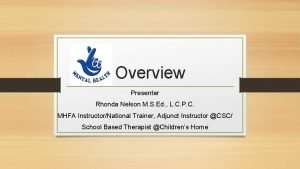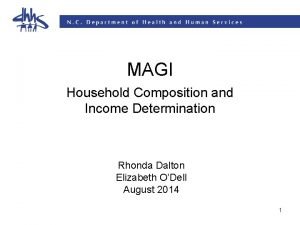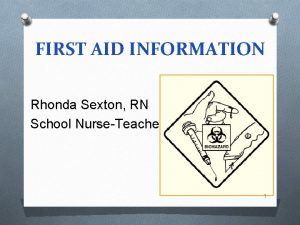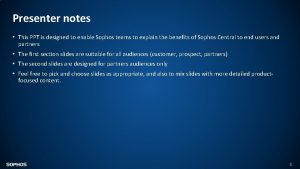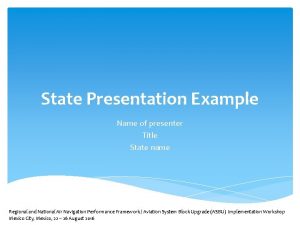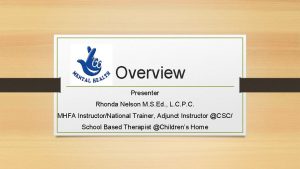Overview Presenter Rhonda Nelson M S Ed L















- Slides: 15

Overview Presenter Rhonda Nelson M. S. Ed. , L. C. P. C. MHFA Instructor/National Trainer, Adjunct Instructor @CSC/ School Based Therapist @Children’s Home

https: //www. youtube. com/watch? v=NEWNm. Bb. O 1 Ww&list =PLo 760 GDnmn-Wa. NKRk. Zo. Ufmfu. Jk. Yrj 0 SAD

Group Activity

What is it?

What is a Mental Disorder? A mental disorder or mental illness is a diagnosable illness that: • Affects a person’s thinking, emotional state and behavior • Disrupts the person’s ability to: Ø Work Ø Carry out daily activities Ø Engage in satisfying relationships 5

U. S. Adults with a Mental Disorder in Any One Year Type of Mental Disorder % Adults Anxiety disorder 18. 1 Major depressive disorder 6. 8 Substance use disorder 8. 1 Bipolar disorder 2. 8 Eating disorders 5 -10 Schizophrenia Any mental disorder 0. 3 -0. 7 18. 5 Only 41% of people with a mental illness use mental health services in any given year 6

Prevalence and Treatment of Mental Health Disorders among College Students in Past Year Disorder % % Estimated Received Prevalence Treatment Mood disorder (including Major Depressive Disorder, Dysthymia, Bipolar Disorder) 10. 6 34. 0 Anxiety Disorder (including Panic, Social Anxiety, GAD, Specific phobia) 11. 9 15. 9 Alcohol Use Disorder 20. 4 Drug Use Disorder 5. 0 Any Disorder 45. 8 5. 3 18. 5 *Blanco et. al. 2008 7

Characteristics of College Students • 80% ages 18 -24 • 4% international • 660, 000 veterans • 32% racially/culturally diverse • 4 -10% LGBTQ • Increasing numbers of non-traditional students (e. g. older and returning students) 8

Why Mental Health First Aid? • Mental health problems are common • Stigma is associated with mental health problems • Many people are not well informed about mental health problems • Professional help is not always on hand • People often do not know how to respond • People with mental health problems often do not seek help 9

Why Mental Health First Aid for Higher Education? • 40% of young adults 18 -24 are enrolled in 2 or 4 year educational institutions • 75% of mental disorders develop before age 25 • Early identification and treatment can lessen the impact of the mental illness • Only 18. 5% of college students ages 18 -24 receive services for any mental health disorder 10

Risk Factors & Warning Signs

Challenges to Supporting Students

https: //www. youtube. com/watch? v=f. V 1 CQa. TTv z. E&t=165 s

Prevention Strategies • Reduce stigma and encourage help-seeking • Increase early identification of and interventions for emerging mental health problems • Increase the number and type of healthy activities: • Exercise options, sports activities, classes in yoga and meditation • Student organizations that promote service activities • Support groups • Publicize reliable web resources for support • Promote a supportive campus climate that encourages help-seeking 14

Mental Health First Aid USA 15
